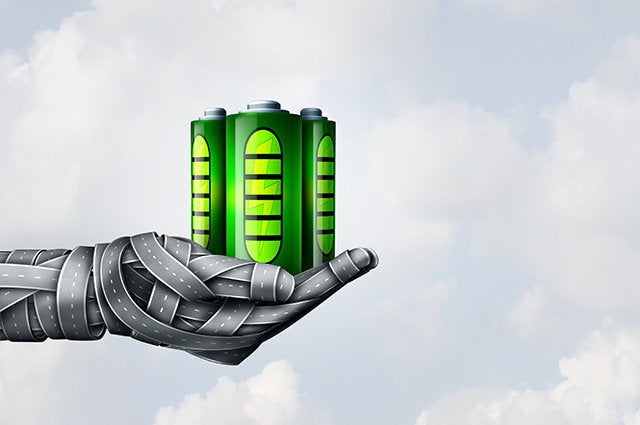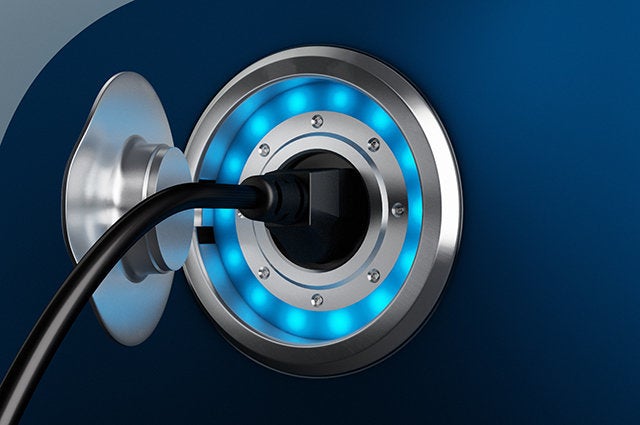For what seems like a long time now, electric vehicles (EVs) have been on the cusp of going mainstream – in fact it was three decades ago that major automotive manufacturers first introduced working concepts of EVs. Since then we’ve seen the hybrid vehicle make a significant impact on the car market, and now it looks like the fully-fledged EV is set to change motoring for good, making our cities less polluted and altering the very way we think of energy and how to use it.

The battery revolution
In the past, what’s held the EV back has been the high cost of batteries and their limited range. Consumers looking at the bottom line found they were paying more money for a car that travelled shorter distances. That has radically changed in recent years. A survey in 2016 by Bloomberg New Energy Finance predicted that the total cost of EV ownership – that’s a combination of purchase price and running costs – would dip below those of conventional diesel and petrol cars by 2022.
Battery costs have reduced enormously – 65% since 2010 – mainly for two reasons: firstly, as manufacturers figure out ways to make processes and materials more efficient, production becomes cheaper; secondly, economy of scale means that as EVs become more popular, the increasing demand pushes the cost of each individual battery down.
The other decisive factor with batteries is to do with improvements in their chemistry, which means they can now power a car over much longer distances. Where as previously an EV might have managed 30 or 40 miles between charges, now it is standard for an EV to travel 80-100 miles (more than enough for standard daily use), while vehicles using larger batteries can travel in excess of 250 miles between charges.

Going station to station
Another criticism of EVs in the past has been the lack of charging points. This meant that – especially for long journeys – you had to plan meticulously and incorporate various diversions to ensure you didn’t wind up in the middle of nowhere with a dead battery.
But in the UK for example, the EV charging network is expanding rapidly. There are now 4,100 public charging locations, which is remarkable when you think there were only a few hundred as recently as 2011. Compare that to the 8,472 traditional fuel stations (a drop of 75% in the last 40 years) and it’s clear a major shift is underway. In fact, based on these trends, electrical charge points will outnumber traditional fuel stations by 2020.
The same is happening in other parts of the world too. The EU has a draft directive set to come into effect by 2019 that will mean every new or refurbished house has to have an EV charging point, while 10% of parking spaces in new buildings will need recharging facilities by 2023.
Countries such as Norway and Holland are pushing especially hard for such measures given they plan to completely phase out diesel engines by 2025. New charge station technology, like high-speed charging stations that can fully charge a car in as little as 40 minutes, will also start to become more commonplace, making the whole process more convenient for EV drivers.

Driving energy
One significant bonus for EV drivers relates to the energy convergence we’re beginning to see in urban areas, and how these vehicles interact with a ‘smart city’ dynamic. For example, how would you feel about your electric car providing power for your house, or the prospect of getting cash back for your EV supplementing the national grid?
With more solar power being used in businesses and homes, it will become increasingly possible to transfer energy. For example, your rooftop solar panels could be used to charge your car during sunny daytime hours, while any residual power from your car’s battery can be transferred back to help power your home at night.
Recharge stations could also be used to feed energy back to the national grid, a process we already see in places like Japan, which has one of the largest EV populations in the world. It operates ‘Vehicle to Grid’ (V2G) systems, which essentially turn EVs into generators, enabling their users to sell energy from their parked cars to the national grid at times when it is most needed. Such technology combines easily with an app on your smartphone or alternative device that, in turn, ensures none of said energy is wasted.
For years we’ve been told the Electric Vehicle is the future, but as that future begins to unfold, and people begin to understand both the economic and environmental benefits, their popularity will begin to snowball. Within a generation, there is every chance EVs will be the only vehicles we’ll see on the road.